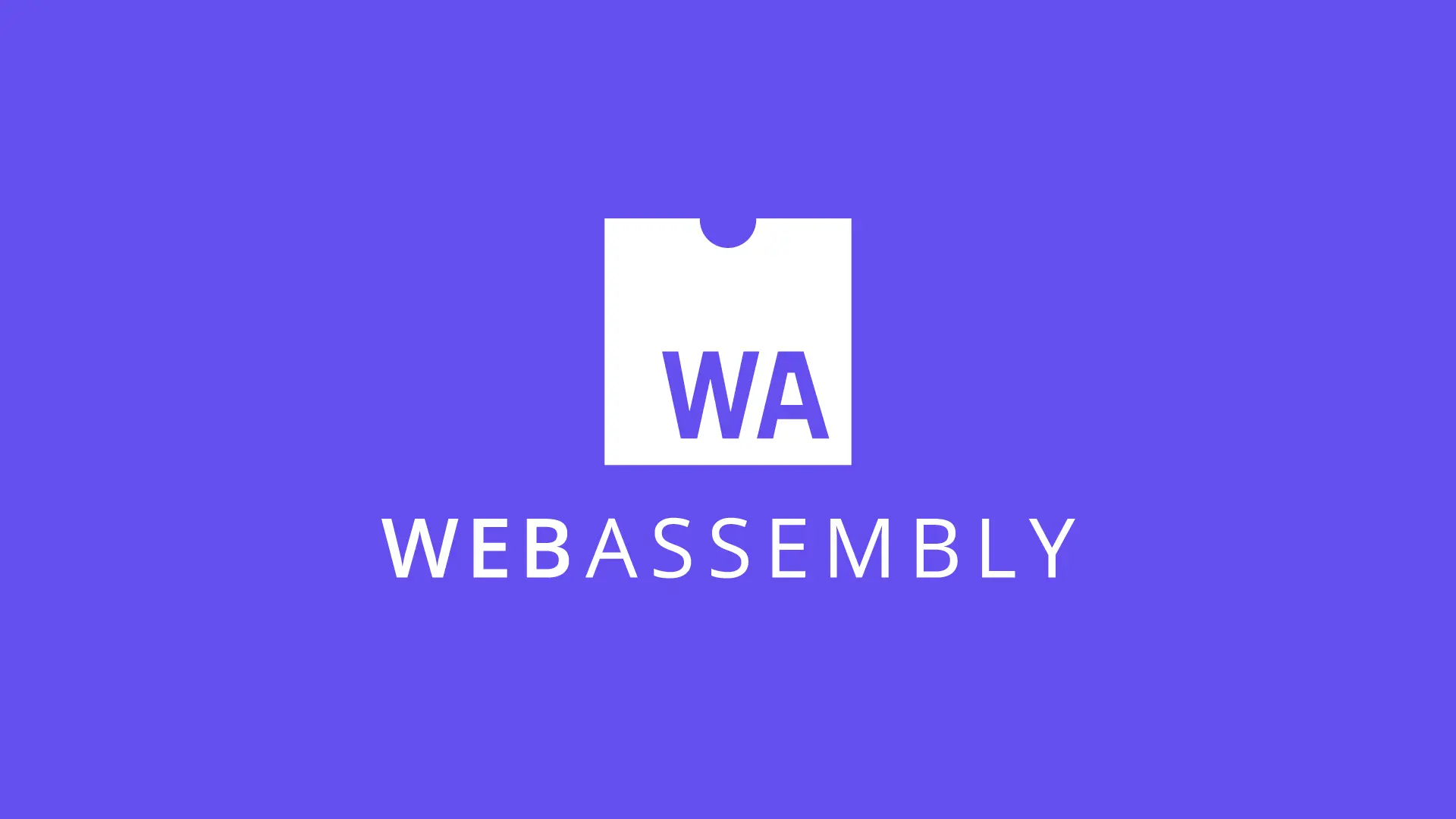WebAssembly in 2024: Promises, Challenges, and the Road Ahead
Explore the current state of WebAssembly in 2024, including its successes, challenges, and future prospects.

Introduction
WebAssembly (WASM) has been a hot topic in web development circles for several years now, promising near-native performance and the ability to use languages other than JavaScript in the browser. As we move through 2024, it’s worth taking a deep dive into the current state of WebAssembly, examining its successes, challenges, and future prospects. This blog post aims to provide a comprehensive overview of WebAssembly for software engineers, drawing on recent developments and expert insights.
The Promise of WebAssembly
WebAssembly was introduced with great fanfare, offering several enticing benefits:
-
Near-native performance: By allowing lower-level languages to compile to a binary format that runs in the browser, WebAssembly promised significant performance improvements over JavaScript for computationally intensive tasks.
-
Language diversity: WASM opened the door for using languages like C++, Rust, and potentially many others for web development, broadening the toolset available to web developers.
-
Code reuse: Existing codebases in languages like C++ could potentially be brought to the web, enabling complex applications like Photoshop to run in the browser.
-
Security: WebAssembly runs in a sandboxed environment, providing an additional layer of security compared to native code.
Current State of WebAssembly
Success Stories
While WebAssembly hasn’t seen the widespread adoption some initially predicted, there have been notable successes:
-
Adobe Photoshop: One of the most prominent examples of WebAssembly in action, Adobe has successfully ported Photoshop to the web using WASM.
-
Figma: The popular design tool initially used WebAssembly for certain performance-critical parts of their application, though they’ve been less vocal about their WASM usage in recent years.
-
npm libraries: Many npm packages use WebAssembly under the hood, often for performance-critical operations compiled from C++ or Rust.
-
Video and image processing: WebAssembly has found a niche in computationally intensive tasks like video and image processing in the browser.
Challenges and Limitations
Despite these successes, WebAssembly has faced several challenges that have limited its adoption:
-
DOM interaction: Early versions of WebAssembly couldn’t directly interact with the DOM, requiring JavaScript as an intermediary. This added complexity and reduced performance gains for DOM-heavy applications.
-
Large bundle sizes: Many WebAssembly applications, especially those compiled from languages with large runtimes like Go or Python, result in multi-megabyte bundles. This is problematic for web applications where load time is critical.
-
Garbage collection: Until recently, WebAssembly lacked built-in garbage collection, requiring languages to implement their own or rely on simpler memory management strategies.
-
Ecosystem and tooling: The WebAssembly ecosystem, while growing, still lags behind the mature JavaScript ecosystem in terms of tooling, libraries, and developer experience.
-
Performance reality: While WebAssembly can offer performance improvements in certain scenarios, the performance gap with optimized JavaScript is often smaller than initially expected, especially for DOM-heavy applications.
WebAssembly Performance: Myths and Realities
Let’s dive deeper into the performance aspect of WebAssembly, as it’s been a subject of much debate and misconception.
Myth 1: WebAssembly is Always Faster Than JavaScript
Reality: The performance of WebAssembly versus JavaScript depends heavily on the specific use case. For computationally intensive tasks with little DOM interaction, WebAssembly can indeed offer significant performance improvements. However, for many web applications, especially those that are DOM-heavy, the performance difference may be negligible or even favor JavaScript.
Recent benchmarks have shown that well-optimized JavaScript frameworks can perform comparably to or even outperform some WebAssembly frameworks for common web application tasks. For example, in the JS Framework Benchmark, which measures raw rendering speed, JavaScript frameworks like Solid.js often perform similarly to or better than WebAssembly frameworks for many operations.
Myth 2: WebAssembly is Too Slow for Web Development
Reality: This myth has been largely debunked. Several WebAssembly frameworks, particularly those written in Rust like Leptos and Dioxus, have demonstrated performance comparable to or better than many popular JavaScript frameworks. The key is in the implementation and optimization strategies used by these frameworks.
For instance, Dioxus uses advanced compilation techniques to distinguish between static and dynamic parts of templates, allowing for more efficient updates. Leptos uses fine-grained reactivity to minimize the amount of work done during updates. These approaches allow WebAssembly frameworks to compete effectively with optimized JavaScript frameworks.
Myth 3: Direct DOM Access Will Make WebAssembly Significantly Faster
Reality: While direct DOM access from WebAssembly (which is coming soon) will likely improve performance, it’s not the primary bottleneck for most applications. The main performance cost often comes from copying strings between WebAssembly and JavaScript, rather than the inability to call DOM APIs directly.
The String Encoding Challenge
One significant performance challenge for WebAssembly is the mismatch between string encodings. JavaScript uses UTF-16 encoding, while most other languages (including those commonly compiled to WebAssembly) use UTF-8. This means that strings often need to be not only copied but also re-encoded when passing between WebAssembly and JavaScript, which can be a significant performance cost, especially for text-heavy applications.
Memory Usage and Load Times
Another important consideration is memory usage and initial load times. WebAssembly modules often have larger initial bundle sizes compared to equivalent JavaScript code. This is particularly true for languages with large runtimes. For example:
- A minimal “Hello World” program compiled to WebAssembly from Go can be around 2 MB.
- Python implementations for WebAssembly, like Pyodide, can result in 20 MB or more of initial download.
These sizes can be prohibitive for web applications where quick load times are crucial. However, it’s worth noting that for complex applications like Photoshop, the tradeoff of a larger initial download for improved runtime performance can be worthwhile.
The Tree-Shaking Challenge
One of the key techniques used in JavaScript bundling to reduce code size is “tree-shaking” - the process of eliminating dead code. This process is more challenging for WebAssembly, especially for languages with complex type systems or dynamic features.
For statically-typed languages like Rust, effective tree-shaking is more feasible. However, for more dynamic languages like Python, determining which code paths are truly unused becomes a complex flow analysis problem. This challenge is exacerbated by features like dynamic dispatch in object-oriented programming, which make it difficult to determine at compile-time exactly which code paths might be executed.
The Future of WebAssembly
Despite these challenges, WebAssembly continues to evolve, and several developments are shaping its future:
1. Garbage Collection Support
One of the most significant recent developments is the addition of garbage collection support to WebAssembly. This feature, which is being rolled out across major browsers, addresses one of the key limitations that has held back the adoption of WebAssembly for languages that rely on garbage collection.
With native garbage collection support, languages like Python, Java, and C# can potentially target WebAssembly more efficiently, without needing to implement their own garbage collectors or rely on less efficient memory management strategies.
2. Component Model
The WebAssembly Component Model is an exciting proposal that aims to make it easier to create and compose WebAssembly modules. This could lead to a more modular ecosystem, where developers can easily combine WebAssembly modules written in different languages.
3. WASI (WebAssembly System Interface)
While not directly related to browser-based use cases, the development of WASI is expanding WebAssembly’s potential beyond the web. WASI aims to provide a standardized system interface for WebAssembly, allowing WASM modules to run in various environments outside the browser.
4. Improved Tooling and Frameworks
As the WebAssembly ecosystem matures, we’re seeing the development of more sophisticated tooling and frameworks. Projects like Leptos and Dioxus in the Rust ecosystem are pushing the boundaries of what’s possible with WebAssembly on the web, offering performance that rivals or exceeds many JavaScript frameworks.
5. Web APIs Access
Work is ongoing to allow WebAssembly to access Web APIs directly, without going through JavaScript. This could potentially improve performance for WebAssembly applications that need to interact heavily with browser APIs.
Challenges Ahead
Despite these promising developments, several challenges remain for WebAssembly:
-
Bundle Size Optimization: For WebAssembly to be viable for a broader range of web applications, more work needs to be done on reducing bundle sizes. This will likely require advancements in compilation strategies and potentially new approaches to loading and caching WebAssembly modules.
-
Developer Experience: While WebAssembly opens up web development to more languages, the developer experience often lags behind what’s available in the JavaScript ecosystem. Improving debugging tools, hot reloading capabilities, and other developer-friendly features will be crucial for broader adoption.
-
Tree-Shaking and Dead Code Elimination: As discussed earlier, effective tree-shaking for WebAssembly, especially for more dynamic languages, remains a significant challenge. Advances in static analysis and potentially new language features or constraints may be necessary to address this.
-
Education and Adoption: Many web developers are deeply invested in the JavaScript ecosystem and may be hesitant to adopt WebAssembly. Continued education about WebAssembly’s benefits and use cases, as well as improved integration with existing web development workflows, will be important for driving adoption.
Conclusion
WebAssembly in 2024 stands at an interesting crossroads. While it hasn’t revolutionized web development to the extent that some early proponents hoped, it has carved out important niches and continues to evolve in promising ways.
For computationally intensive tasks, WebAssembly remains a powerful tool in the web developer’s arsenal. The addition of garbage collection support and ongoing work on the component model and direct Web API access suggest that WebAssembly’s utility and ease of use will only increase in the coming years.
However, for many web applications, especially those that are DOM-heavy, the performance benefits of WebAssembly may not outweigh the added complexity and potential increases in bundle size. The challenges of effective tree-shaking and code size optimization remain significant hurdles for broader adoption.
As software engineers, it’s important to approach WebAssembly pragmatically. It’s a powerful technology with specific use cases where it excels, but it’s not a silver bullet for web performance. When considering WebAssembly for a project, carefully evaluate the specific needs of your application, the potential performance gains, and the tradeoffs in terms of bundle size, load time, and development complexity.
The future of web development likely involves a hybrid approach, where JavaScript and WebAssembly coexist, each used where they’re most effective. As the WebAssembly ecosystem continues to mature, we can expect to see more nuanced and powerful ways to leverage its strengths while mitigating its current limitations.
In the meantime, staying informed about WebAssembly developments, experimenting with WASM in appropriate scenarios, and contributing to the ecosystem can help shape a web that leverages the best of both JavaScript and WebAssembly. The journey of WebAssembly is far from over, and the next few years promise to be an exciting time in its evolution.
